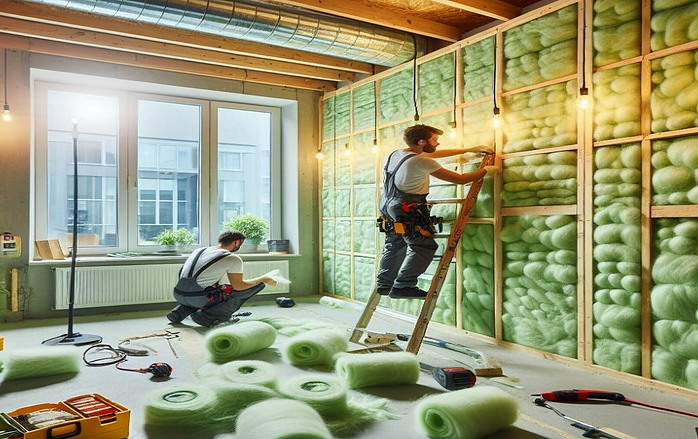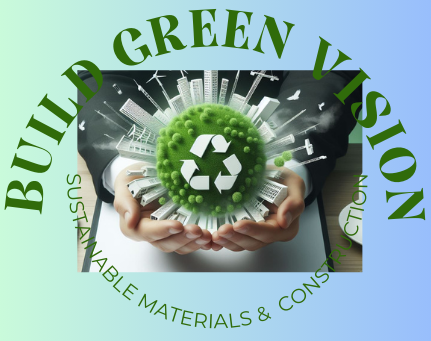
In today’s world, where environmental concerns and energy conservation are of utmost importance, the need for energy-efficient insulation has become increasingly vital. Insulation plays a crucial role in maintaining comfortable indoor temperatures while minimizing the use of heating and cooling systems. This article explores the significance of energy-efficient insulation and highlights innovative solutions that can help businesses and homeowners achieve optimal energy savings.
The building and construction sector is one of the top three energy consumers in the world, where a considerable portion of demand is due to space conditioning. According to statistical data, the construction industry accounts for about 40 percent of global energy consumption and is expected to increase to 50 percent by 2050. Nations and countries all around the world have introduced various remedies centered on building energy conservation. One of the most effective ways to reduce energy consumption in buildings is through the use of energy-efficient insulation.
The Importance of Energy-Efficient Insulation:
Energy-efficient insulation is essential for reducing energy consumption and minimizing greenhouse gas emissions. Proper insulation can significantly enhance the thermal performance of buildings by reducing heat transfer through walls, roofs, and floors. This, in turn, reduces the reliance on heating and cooling systems, resulting in substantial energy cost savings.
Innovative Insulation Solutions:
1. High-performance Insulation Materials:
Developments in insulation technology have introduced a range of high-performance materials that offer superior thermal resistance and energy efficiency. These materials include rigid foam boards, spray foam, and reflective insulation. By incorporating these advanced insulation materials into building designs, businesses and homeowners can achieve higher levels of energy efficiency.
2. Building Envelope Optimization:
The building envelope, which consists of walls, roofs, windows, and doors, is a critical component in achieving energy efficiency. By optimizing the design and construction of the building envelope, energy loss can be minimized, and indoor comfort can be maximized. Strategies such as air sealing, proper insulation installation, and the use of low-emissivity windows can significantly enhance energy efficiency.
3. Smart Insulation Technologies:
The advent of smart technologies has revolutionized the insulation industry. Smart insulation systems utilize sensors and data analysis to optimize energy consumption and indoor comfort. These systems can automatically adjust insulation levels based on weather conditions, occupancy patterns, and user preferences. By integrating smart insulation technologies, businesses and homeowners can achieve precise control over energy usage while ensuring maximum comfort.
4. Sustainable Insulation Solutions:
In addition to energy efficiency, sustainability is a key consideration in insulation solutions. Environmentally friendly insulation materials, such as recycled cellulose, natural fibers, and bio-based foams, offer excellent thermal performance while reducing the carbon footprint. By choosing sustainable insulation options, businesses and homeowners can contribute to a greener future while enjoying long-term energy cost savings.
In brief, Energy-efficient insulation is a crucial aspect of sustainable building practices. By adopting innovative insulation solutions, businesses and homeowners can significantly reduce energy consumption, lower costs, and minimize environmental impact. The continuous advancements in insulation technology provide an opportunity to maximize energy efficiency while ensuring optimal indoor comfort. It is imperative for organizations and individuals to embrace these solutions and play their part in creating a more sustainable future with efficient insulation is a crucial aspect of modern construction, and it is essential to understand the various materials and techniques available to achieve optimal results.
Energy-efficient insulation is an essential aspect of modern construction, and it is essential to understand the various materials and techniques available to achieve optimal results. While energy-efficient insulation has several benefits, it also has some drawbacks, including higher upfront costs and installation complexity.
However, the benefits of energy-efficient insulation, including reduced energy consumption, improved comfort, and reduced environmental impact, make it an excellent choice for modern construction projects. In this technical literature, I will provide an overview of the most common types of insulation materials, their benefits, and drawbacks.
Types of Insulation Materials
There are many different types of insulation materials currently on the market, each with its own set of thermal qualities and functionality. Some of the most common types of insulation materials include:
1. Fiberglass Insulation: This type of insulation is made from glass fibers and is one of the most commonly used insulation materials in the world. It is relatively inexpensive, easy to install, and has excellent thermal resistance properties.
2. Cellulose Insulation: This type of insulation is made from recycled paper products and is an eco-friendly alternative to fiberglass insulation. It is treated with fire retardants and insecticides to prevent damage from pests and fires.
3. Spray Foam Insulation: This type of insulation is made from polyurethane foam and is sprayed onto walls, ceilings, and floors. It is an excellent choice for insulating hard-to-reach areas and has excellent thermal resistance properties.
4. Mineral Wool Insulation: This type of insulation is made from rock or slag wool and is an excellent choice for insulating high-temperature areas. It is also resistant to fire and pests.
5. Reflective Insulation: This type of insulation is made from aluminum foil and is an excellent choice for insulating attics and crawl spaces. It reflects heat away from the building, keeping it cool in the summer and warm in the winter.
Benefits of Energy-Efficient Insulation
Energy-efficient insulation has several benefits, including:
1. Reduced Energy Consumption: Energy-efficient insulation reduces the amount of energy required to heat or cool a building, resulting in lower energy bills.
2. Improved Comfort: Energy-efficient insulation helps maintain a consistent temperature throughout the building, resulting in improved comfort for occupants.
3. Reduced Environmental Impact: Energy-efficient insulation reduces the amount of energy required to heat or cool a building, resulting in a reduced environmental impact.
Drawbacks of Energy-Efficient Insulation
While energy-efficient insulation has several benefits, it also has some drawbacks, including:
1. Upfront Cost: Energy-efficient insulation can be more expensive than traditional insulation materials, resulting in higher upfront costs.
2. Installation Complexity: Some types of energy-efficient insulation, such as spray foam insulation, require professional installation, resulting in higher installation costs.
3. Environmental Impact: Some types of energy-efficient insulation, such as spray foam insulation, can have a negative environmental impact due to the chemicals used in their production.
Conclusion
Energy-efficient insulation is an essential aspect of modern construction, and it is essential to understand the various materials and techniques available to achieve optimal results. While energy-efficient insulation has several benefits, it also has some drawbacks, including higher upfront costs and installation complexity. However, the benefits of energy-efficient insulation, including reduced energy consumption, improved comfort, and reduced environmental impact, make it an excellent choice for modern construction projects.
